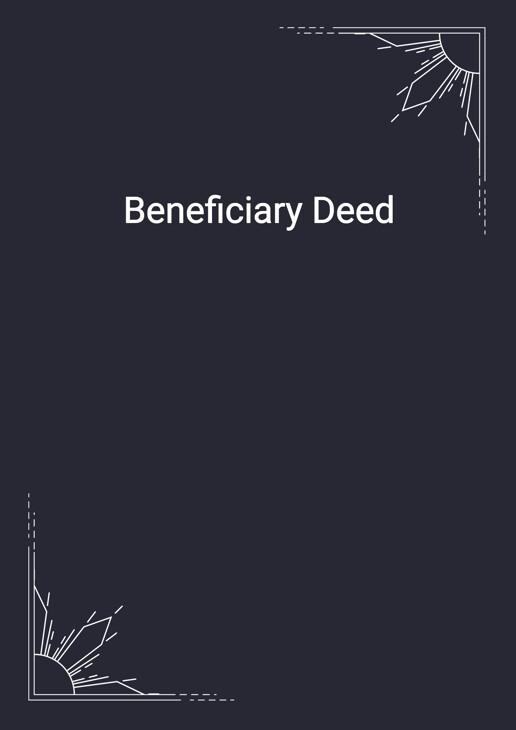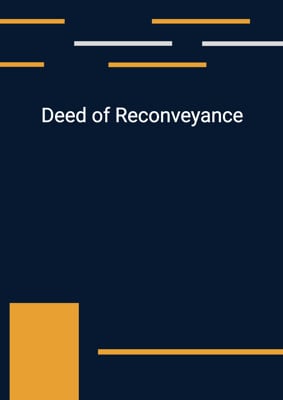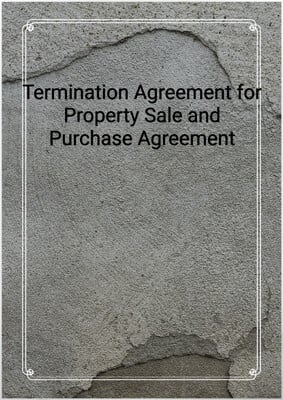How to Tailor the Document for Your Need?
01
Create Document
Fill in the details of the parties. You can click the "Fill with Member’s Information" button to complete it with information saved to your account.
02
Fill Information
Please fill in any additional information by following the step-by-step guide on the left hand side of the preview document and click the "Next" button.
03
Get Document
When you are done, click the "Get Document" button and you can download the document in Word or PDF format.
04
Review Document
The document should be signed by the authorised signatory (or directors of a company) and witnessed to complete the formality.
Document Preview
Document Description
The Beneficiary Deed is a legal document that allows the grantor to transfer ownership of real property to designated beneficiaries upon their death. This document is commonly used to avoid probate and ensure a smooth transfer of property to the intended beneficiaries.
The document begins with a clear statement of the grantor's intention to transfer the property to the beneficiaries. It specifies that the transfer will only take effect upon the death of the grantor, ensuring that the grantor retains control and ownership of the property during their lifetime.
The Beneficiary Deed also includes a description of the property, including the property address and a legal description. This ensures that the beneficiaries are aware of the specific property that they will inherit.
The document further states that the beneficiaries will hold the property as joint tenants with right of survivorship. This means that if one beneficiary passes away, their share of the property will automatically transfer to the surviving beneficiary.
To protect the grantor's interests, the document allows the grantor to revoke or change the deed at any time without the consent of the beneficiaries. This provides flexibility in case the grantor's circumstances or intentions change.
In the event that a beneficiary predeceases the grantor, the document specifies that the beneficiary deed will be null and void. This ensures that the property will not pass to the beneficiary's estate or heirs, but will instead be distributed according to the grantor's wishes.
The Beneficiary Deed concludes with the grantor's signature, which must be witnessed and notarized. This ensures the validity and enforceability of the document.
Overall, the Beneficiary Deed is an important legal document that allows individuals to transfer real property to designated beneficiaries without the need for probate. It provides a clear and efficient method of passing on property and ensuring that the grantor's wishes are carried out.
How to use this document?
1. Clearly state your intention: Begin by clearly stating your intention to transfer ownership of the property to designated beneficiaries upon your death.
2. Provide property details: Include a description of the property, including the property address and a legal description. This ensures that the beneficiaries are aware of the specific property they will inherit.
3. Specify joint tenancy with right of survivorship: State that the beneficiaries will hold the property as joint tenants with right of survivorship. This ensures that if one beneficiary passes away, their share of the property will automatically transfer to the surviving beneficiary.
4. Retain control with revocation rights: Specify that you have the right to revoke or change the deed at any time without the consent of the beneficiaries. This provides flexibility in case your circumstances or intentions change.
5. Address predeceased beneficiaries: Include a provision stating that if a beneficiary predeceases you, the beneficiary deed will be null and void. This ensures that the property will be distributed according to your wishes.
6. Sign and notarize the deed: Sign the deed in the presence of witnesses and have it notarized to ensure its validity and enforceability.
Note: It is recommended to consult with a legal professional to ensure that the Beneficiary Deed complies with the laws and regulations of your jurisdiction.
Not the right document?
Don’t worry, we have thousands of documents for you to choose from:














